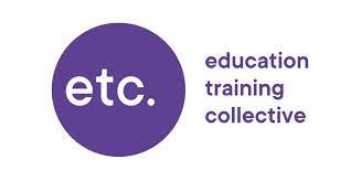The education sector has experienced huge upheaval over the last 14 months and teachers and students have done an incredible job adapting to online learning.
While this pivot highlighted many advantages, it was also evident that there were a significant number of students with no access to a laptop, desktop, tablet, or a stable internet connection at home. These digitally excluded students were unable to study and benefit in the same way as their peers.
Can we afford to ignore the 9% of students who continue to have no internet access out of school hours?*
Evidence shows the education system will continue to adapt to remote learning in this ever-changing landscape. This presents a requirement for schools throughout the UK to work towards eliminating the digital divide among their students and stop the inequality to avoid further negative impact on too many students and schools. Achieving digital equity will pave the way for new opportunities to improve education for everyone going forward.
The link between poverty and digital exclusion is clear**
Per cent of UK households with a stable internet access
- 51% of households earning between £6000-10,000
- 99% of households with an income of over £40,001
Per cent of students achieved grades 9-5 in GCSE English and Maths
- 25% of students who have been eligible for free school meals
- 50% of all other pupils.

What is the impact of digital inequality?
- Low performance: Students from low-income households have reduced access to information that will advance their education. Research shows that there is a half a point difference, a B+ becomes a B. This can often be the difference between getting the score needed to access further education, and this is lowering the academic outcomes of low-income, underserved students.
- Competitive edge: Students with access to the internet will perform better when they enter higher education due to universities embracing technology at an increasing rate.
- Convenience in learning: Privileged students have access to better devices and face less hurdles to complete their education.
- Different learning experiences: Students from low socio-economic areas face more disadvantages and must spend more hours to complete learning objectives.
The digital divide existed long before the pandemic but, faced with the prospect of a more blended learning system, school leaders need to be agile to level the playing field and ensure these students are not left behind.
What can we do?
Teachers and experts all agree the learning methods will change and we need to make sure all students will be involved.
“Covid has given an impetus to schools to adopt, roll out and use more of the functionality of edtech tools,” says Hannah Owen, of the Nesta innovation foundation in The Guardian. “It’s likely, and optimal, that we’ll move to blended models, where remote and digital platforms support in-person classroom teaching and contribute to minimising teacher workload.”***

A few steps schools can consider ensuring student equality:
- Take inventory: Have a thorough understanding of which students have no internet access, and the reasons behind this
- Put a strategic plan in place. The plan needs to be easy, streamlined, and quick to activate. What should a teacher do when noticing a student requires additional tools to access remote learning? Does the school have a way to quickly provide the student with the hardware and connectivity required?
- Consider an annual technology budget to ensure these students will get the help they need. Create conversations with leaders about how to fund additional resources.
- Connect with potential technology companies about digital resource partnerships.
- Provide training and information technology support to educators and parents in the most impacted schools
- Ensure any connectivity provided is filtered.
If you would like to discuss more steps and solutions for the educational sector how to keep students safe and connected, reach out to us at kajeet.co.uk
At Kajeet, our goal has always been to help the educational system to create a completely connected learning environment. That’s why we have a full suite of plug and play wireless solutions to ensure students have safe, reliable access to the online resources they need to succeed in school and beyond.
Together we can work to bridge the digital divide and connect all students in the UK.
- *https://www.childrenscommissioner.gov.uk/2020/08/18/children-without-internet-access-during-lockdown/
- **https://www.cam.ac.uk/stories/digitaldivide
- ***https://www.theguardian.com/education/2021/jan/23/after-covid-will-digital-learning-be-the-new-normal















Your thoughts